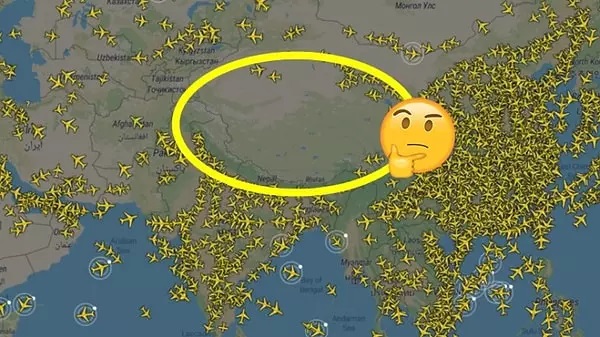
Introduction
When you look at the flight paths of commercial airliners, you might notice an interesting pattern—few flights venture over the expansive region of Tibet. While it may appear as a mere coincidence, there are several compelling reasons why airlines tend to avoid flying over Tibet. In this article, we will delve into the geographical, meteorological, and political factors contributing to this phenomenon.
The Roof of the World
Tibet, often referred to as “The Roof of the World,” is a vast and rugged plateau in Asia, with an average elevation exceeding 4,500 meters (14,800 feet) above sea level. This high-altitude landscape poses several challenges for aircraft:
- **
Low Oxygen Levels
**At such high altitudes, the air is significantly thinner, resulting in lower oxygen levels. This makes it more difficult for both passengers and aircraft engines to function optimally. Flying at high altitudes can increase the risk of hypoxia for passengers and reduce engine efficiency.
- **
Turbulent Weather
**The Tibetan Plateau is notorious for its turbulent weather patterns, including strong winds, thunderstorms, and rapid changes in atmospheric conditions. These factors can make flights over Tibet less comfortable and safe for passengers.
The Jet Stream Effect
Another reason airlines avoid Tibet is the presence of the jet stream, a fast-flowing air current in the upper atmosphere. The jet stream over Tibet is particularly strong, and its high-speed winds can significantly affect flight times and fuel consumption:
- **
Headwinds and Tailwinds
**Depending on the flight direction, aircraft may encounter strong headwinds or benefit from tailwinds when flying over Tibet. Headwinds increase the time it takes to reach the destination and consume more fuel, leading to higher operating costs for airlines.
- **
Unpredictable Shifts
**The jet stream’s intensity and location can vary, making it challenging for airlines to predict its effects accurately. This unpredictability can disrupt flight schedules and increase the risk of turbulence.
Geopolitical Sensitivities
Aside from the geographical and meteorological challenges, airlines must also navigate the complex web of geopolitics when considering flight paths over Tibet:
- **
Tibet’s Political Status
**The status of Tibet is a contentious issue. China has controlled Tibet since the 1950s, but Tibet’s political status remains a subject of international dispute. Many countries do not officially recognize Tibet as part of China, which creates diplomatic sensitivities for airlines.
- **
China’s Airspace Regulations
**China maintains strict control over its airspace, and flights entering or passing through Chinese airspace require authorization. Airlines must comply with China’s regulations and policies, which can add complexity and uncertainty to flight planning.
Alternative Routes and Solutions
Given these challenges, airlines often opt for alternative flight routes to bypass Tibet:
- **
Southern Route
**Many flights between Europe and Asia choose a more southern route, passing over India, the Middle East, or Southeast Asia. These routes offer lower altitudes, milder weather, and less interaction with the Tibetan Plateau and its jet stream.
- **
Higher Altitude Aircraft
**Some modern aircraft are designed to handle higher altitudes more efficiently. These aircraft can mitigate some of the challenges posed by flying over Tibet, but they are not a universal solution.
In conclusion, the avoidance of Tibet by commercial airlines is not a mere coincidence but a result of a combination of factors. The high altitude, turbulent weather, powerful jet stream, and geopolitical sensitivities make flying over Tibet a less desirable option for airlines. To ensure passenger safety, comfort, and operational efficiency, airlines opt for alternative flight routes that avoid the challenges posed by the Tibetan Plateau. Understanding these factors sheds light on the complex decisions made by airlines when planning their routes and highlights the intricate interplay between geography, meteorology, and politics in the world of aviation.
